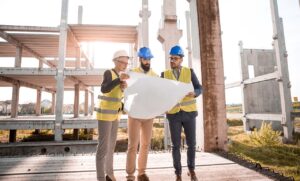
The Rise of Conscious Construction: Materials, Mindset, and Impact
Construction does not merely shape physical structures. Rather, it influences how people live, how communities develop, and the extent to which we strain the planet. Every material you choose, every design decision you make, sends a ripple outward. That’s where conscious construction comes in.
It is not merely a design trend, but has now become a mindset. It is a deliberate shift toward making choices that support long-term well-being, for both people and the planet.
Let’s walk through what this looks like in real life.
What Is Conscious Construction?
At its core, conscious construction means building smarter. It blends design, environmental care, and human responsibility.
It’s not just about what the building looks like. It’s about how it performs. How long does it last? How it was made. And how it impacts the world around it.
More builders and homeowners are stepping away from quick-and-cheap solutions. Instead, they’re choosing approaches that are energy-efficient, ethically sourced, and designed to reduce waste.
The best part? You don’t need a commercial project or a massive budget to follow this approach. Even small remodels or personal builds can apply these principles.
Smarter Materials That Help the Planet
The materials you use set the tone for everything else. Here are some eco-conscious picks that are gaining real momentum—and making a measurable difference.
-
Recycled Steel
Recycled steel is strong, durable, and endlessly reusable. It’s ideal for frames, support systems, and even roofing. By using recycled steel, you avoid the need for new raw materials and drastically reduce waste.
Take purlins and girts, for example. Many builders use purlins and grits made from recycled steel. They offer the backbone of many industrial and commercial builds. Wondering what are purlins? You’ll find helpful insights in industry-specific blogs from experts, such as Buttler MFG Parts. These resources break down information without the jargon.
In simple words, recycled steel is now being used in more and more structures, specifically in Butler buildings, to ensure lasting durability.
-
Bamboo and Reclaimed Wood
Fast-growing and renewable, bamboo is a favorite for flooring and paneling. Reclaimed wood, on the other hand, brings character and eco-responsibility. It keeps old barn wood, factory flooring, and structural beams out of landfills—and gives them a second life.
You get texture, warmth, and a story that’s hard to match with new lumber.
-
Hempcrete and Mycelium Bricks
These alternative materials are still on the rise, but they show promise. Hempcrete, made from hemp fibers and lime, provides excellent insulation. Mycelium bricks—grown from mushroom roots—are lightweight and compostable.
You’ll find these in small-scale builds, off-grid homes, and experimental housing. But they’re gaining traction for their low environmental impact.
-
Low-VOC Paints and Finishes
You don’t always notice the best improvement—sometimes you inhale it. Low-VOC (volatile organic compound) paints and finishes enhance indoor air quality.
These are particularly prevalent in homes, hospitals, and environmentally friendly houses. They’re better for your health to use and gentler on your lungs.
In simple terms, selecting the right materials is a practical step toward creating spaces that are healthier, more durable, and more in harmony with the planet.
Why More People Are Opting to Build This Way
It’s not just green builders and architects at the forefront anymore. It’s simply good, old-fashioned homeowners, small business owners, and renters jumping in.
Climate change isn’t coming down the road anymore. It’s already here, and it’s changing our way of life.
People want buildings and homes that are true to what they’re about.
And with improved tools and improved information, sustainable building has never been easier.
How Conscious Construction Benefits Everyone
You don’t have to be green to profit. Here’s why it’s a win-win in every direction:
- For the earth: Less energy consumed, less material wasted, and fewer carbon footprints.
- For your health: Improved indoor air quality, greater natural light, and safer chemicals.
- For your wallet: Reduced utility costs and long-lasting materials that pay for themselves over time.
- For designers and builders: Greater trust, more word of mouth, and buildings that stand the test of time.
It’s a full-circle upgrade. You feel better, live better, and tread lighter.
What You Can Do (Even If You’re Not a Builder)
You don’t need to wear a hard hat to make an impact. Whether you’re renovating your kitchen or planning a full build, here’s how you can participate:
- Ask questions. Where did this material come from? How was it made?
- Choose certified products. Look for labels like FSC-certified wood, recycled content, or third-party verification.
- Support responsible brands. Transparency and ethics matter. Partner with those who prioritize both.
Even small shifts make a difference when multiplied across neighborhoods and cities.
Conclusion
Sustainable building is not all about preserving trees and lowering carbon levels. It is more about creating an environment that is more pleasant to live in. It should be one that respects your future and the planet’s future.
Everything you choose makes a difference, whether it’s using recycled steel or selecting a non-toxic paint.
And when you step back to see the bigger picture, it adds up. In simple words, conscious construction is no flash in the pan. It’s a more human-oriented and better method of building.